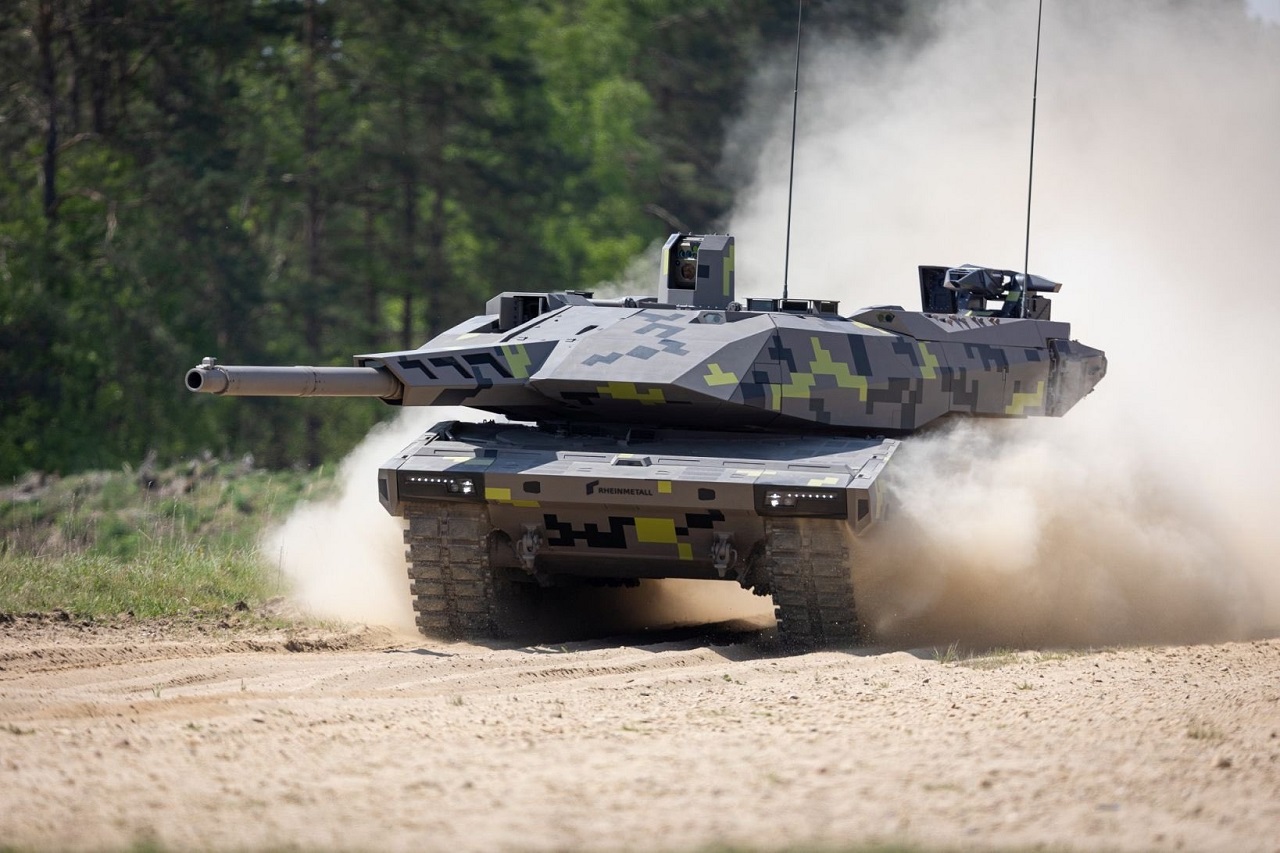KF51 Panther, What You Need to Know – During the Second World War, the German-built Panther – officially Panzerkampfwagen V Panther – was considered to be among the best tanks of the Second World War. The origins of the Panther date back to June 1941, when the Wehrmacht was caught off guard by the quantity but more importantly the quality of Soviet armor, notably the T-34.
Adolf Hitler ordered that the T-34 be copied and even improved upon, and the result was the Panther, which first saw action at the infamous Battle of Kursk in the summer of 1943. The Panther was larger and of superior quality to the T-34 – yet the Nazis lacked the ability to produce significant numbers of the tanks, and it couldn’t help turn the tide of war.
Now nearly 80 years after the original Panther rolled across Europe, German-based Rheinmetall has unveiled the new KF51 tank at the Eurosatory 2022 defense exhibition in Paris, France. It has also earned the moniker Panther.
“The latest member of Rheinmetall’s family of tracked vehicles (KF is short for ‘Kettenfahrzeug’, i.e., tracked vehicle), the KF51 Panther is destined to be game-changer on the battlefields of the future,” the company announced via a statement on Monday.
According to Rheinmetall, the Panther should be seen as the first of its kind, as it is a radically new main battle tank (MBT) “concept that is not constrained by yesterday’s technology.” Instead, the KF51’s design has drawn from some of the latest technology from the ground up, and it promises to have the highest lethality on the battlefield, while combined with an integrated survivability concept. It will feature modern connectivity via a fully digitized NGVA (NATO Generic Vehicle Architecture). This will enable both a hunter-killer and a killer-killer function and thus instantaneous target engagement – in the future also supported by artificial intelligence (AI).
Reduced Crew Size
Whereas the WWII-era Panzer V Panther had a crew of five, the 21st century KF51 Panther has been designed for a crew of three, and it supports future force structures with reduced numbers of soldiers. Two crew stations are located in the chassis, including one dedicated to the driver as well as an optional station dedicated to a company commander, a drone operator, or a wingman pilot. Sensor and weapon control assignments can be passed between crew members instantly, and each workstation can hand over and take over tasks and roles from others with no reduction in functionality, the company explained.
As the turret and weapons control are also provided to the chassis-based work stations, future upgrades being planned now include unmanned turrets, and even remotely operated Panthers.
Heavy Metal Thunder
The new KF-51 Panther will be able to pack a significant punch with its 130mm Rheinmetall Future Gun System (FGS), which consists of a 130 mm smoothbore gun and a fully automatic ammunition handling system. That autoloader holds 20 ready rounds and compared to current 120 mm systems, the FGS promises to deliver more than a 50 percent greater effectiveness at significantly longer ranges of engagement. The FGS can be used to fire kinetic energy (KE) rounds as well as programmable airburst ammunition and corresponding practice rounds.
Secondary weapons include a 12.7 mm coaxial machine gun, while Rheinmetall announced that there several options for the integration of remotely controlled weapon stations (RCWS), which could offer flexibility for proximity and drone defense. The tank can also be integrated with a launcher for HERO 120 loitering munition from Rheinmetall’s partner UVision, and that could further enhance the KF-51’s ability to strike targets beyond the direct line of sight.
The crew of three is protected by a fully integrated, comprehensive, weight-optimized protection concept that incorporates active, reactive, and passive protection technologies.
That includes Rheinmetall’s Top Attack Protection System (TAPS), which was developed to ward off threats from above, while the fast-acting ROSY smoke/obscurant systems can conceal the KF51 from enemy observation. In addition, the Panther’s digital NGVA architecture enables the integration of additional sensors for detecting launch signatures. Its pre-shot detection capability can also be employed to recognize and neutralize threats at an early stage.
The crew can further utilize panoramic SEOSS optical sensor and EMES main combat aiming device, which allows the commander and gunner to observe and engage targets independently of each other, both day and night. Moreover, a stabilized daylight and IR optic with an integrated laser rangefinder are available to each; while a display in the fighting compartment provides the crew with a 360-degree, round-the-clock view of the vehicle’s surroundings. In addition, integrated, unmanned aerial reconnaissance systems enhance the crew’s situational awareness in built-up areas and in the immediate vicinity of the vehicle. This allows each Panther tank to conduct reconnaissance and share the results with other actors in a networked manner.
As the tank was also developed to operate in a contested electromagnetic environment, it is fully hardened against cyber threats.
As the KF-51 Panther is a completely new MBT concept, Rheinmetall was also quick to note that it is the first of a new MBT family. In the near future, the company added, there will be further innovations that support environmentally friendly peacetime operations and further optimization in terms of automation and effectiveness.
Now a Senior Editor for 1945, Peter Suciu is a Michigan-based writer who has contributed to more than four dozen magazines, newspapers and websites. He regularly writes about military hardware, firearms history, cybersecurity and international affairs. Peter is also a Contributing Writer for Forbes.

